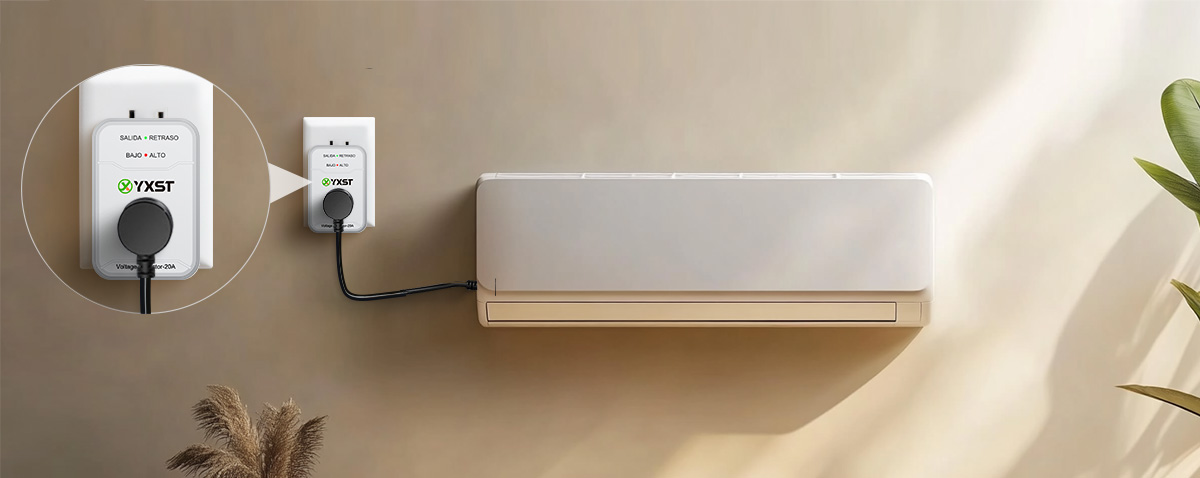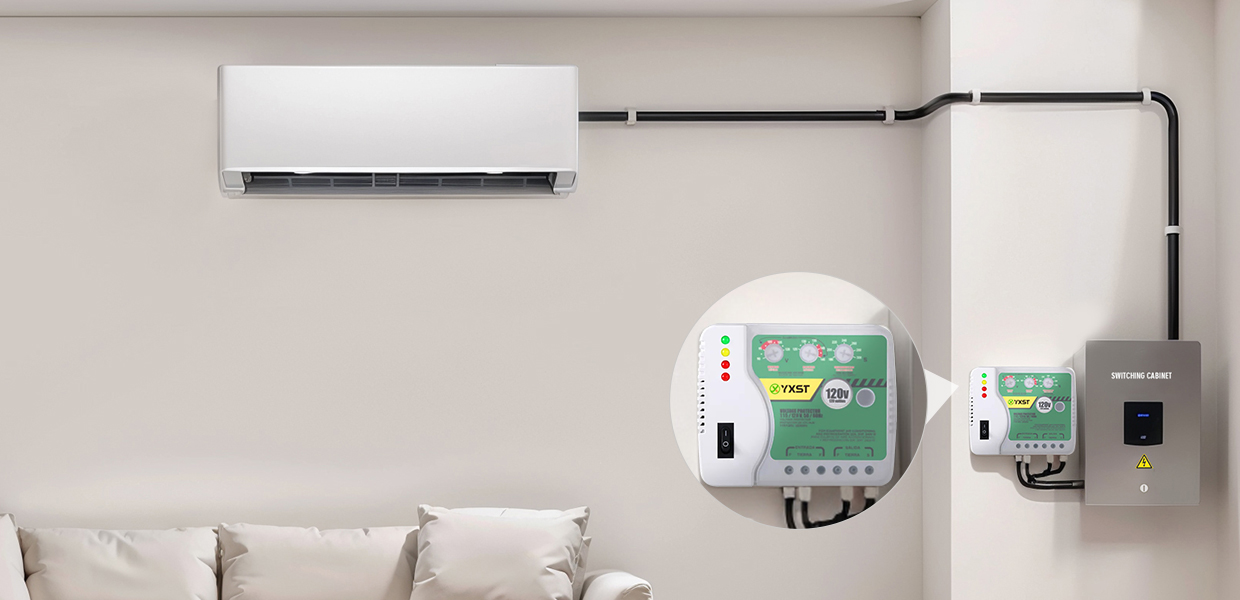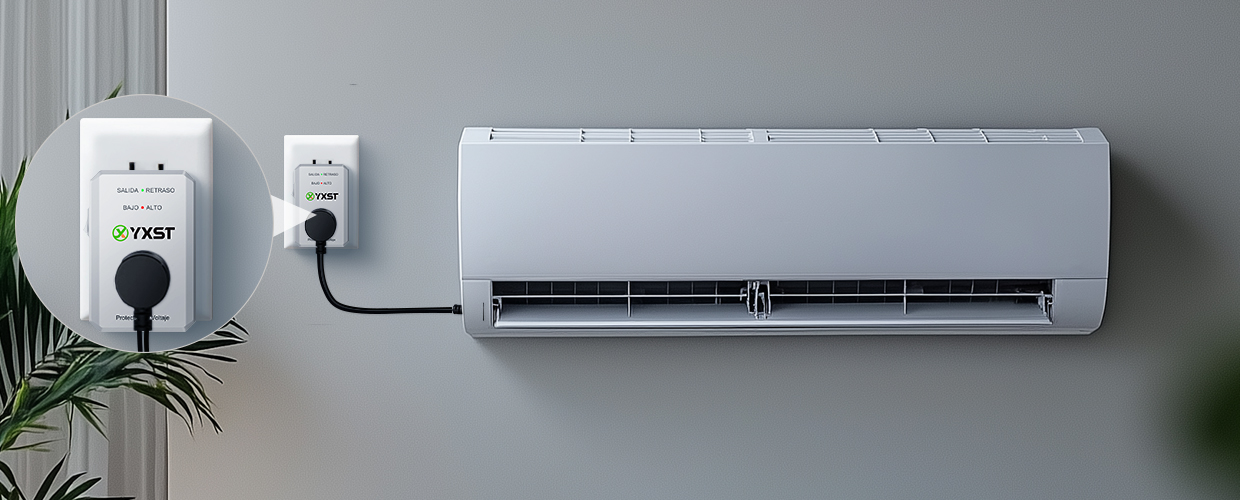Comprehensive guide to surge protectors for air conditioners
Date:2025-01-16 Click:803
In modern life, air conditioners have become important home appliances for adjusting indoor temperature and enjoying a comfortable environment. However, voltage instability and surges may damage the air conditioning unit, affecting its service life and performance. This article will introduce in detail how to install a surge protector on the air conditioning unit, how to check the air conditioning voltage, the voltage range of the air conditioning, and the power requirements of the air conditioning, to help you better protect and use the air conditioning.
How to install a surge protector on the air conditioning unit
→ Preparation
Choose a suitable surge protector: According to the power and voltage requirements of the air conditioner, select a surge protector with rated voltage, rated current, and surge protection capacity. Generally speaking, the rated current of the surge protector for common household air conditioners is 20A - 32A.Turn off the power: Before any installation operation, be sure to turn off the air conditioner's power to ensure safety. This can be achieved by unplugging the air conditioner or turning off the corresponding power switch.
Prepare tools: Basic tools such as screwdrivers and wire strippers are required.
→Installation steps
Determine the installation location: Choose a dry and well-ventilated location close to the air conditioning unit to install the surge protector. It can usually be installed on the wall near the power socket of the air conditioner.Connect the power cord: Use wire strippers to strip the insulation of the air conditioner power cord to an appropriate length, and then connect the input terminal of the surge protector to the power supply line. Make sure the connection is firm and wrap the joint with insulating tape to prevent leakage.
Connect the air conditioner line: Connect the output terminal of the surge protector to the power cord of the air conditioner, and also make sure the connection is firm and well insulated.
Fix the surge protector: Use a screwdriver to fix the surge protector in the selected position to ensure that it does not shake or fall.
Restore power: After completing all the connection and fixing work, turn on the power of the air conditioner and check whether the surge protector is working properly. Some surge protectors have indicator lights, which will light up when working properly.
How to check the voltage of the air conditioner
Use a multimeter
Select the voltage measurement range: Turn the knob of the multimeter to the AC voltage measurement range, and make sure that the range covers the rated voltage range of the air conditioner. For household air conditioners, generally, select an AC voltage range of 250V or 500V.Connect the test leads: insert the red test lead of the multimeter into the VΩ hole, the black test lead into the COM hole, and then touch the red and black test leads to the two jacks of the air conditioner power socket respectively (be careful not to touch the metal parts at the same time to avoid short circuit).
Read the voltage value: read the voltage value displayed on the multimeter display. Under normal circumstances, the voltage of household air conditioners should be around 220V, and a certain fluctuation range is allowed.
Observe the operating status of the air conditioner
Start the air conditioner: Turn on the air conditioner and observe whether it starts and runs smoothly. If the voltage is too low, the air conditioner may be difficult to start or even make abnormal noises; if the voltage is too high, the air conditioner may have overheating protection and other situations.
Check the cooling or heating effect: After the air conditioner has been running for some time, feel the cooling or heating effect in the room. If the voltage is unstable, the cooling or heating effect of the air conditioner may be poor.
Air conditioner voltage range
Household air conditioner
Fixed-frequency air conditioner: The normal operating voltage range of general household fixed-frequency air conditioners is between 198V - and 242V. When the voltage is lower than 198V, the air conditioner may be difficult to start, and even if it is started, it may not be able to cool or heat normally, and components such as the compressor are easily damaged; when the voltage is higher than 242V, it will also damage the circuits and components of the air conditioner.Inverter air conditioner: The voltage adaptation range of the inverter air conditioner is relatively wide, usually between 187V - and 242V. This is because the inverter air conditioner adjusts the speed of the compressor through the inverter, which can adapt to voltage fluctuations to a certain extent, but exceeding this range will also affect its performance and life.
Small commercial air conditioner: such as unit-type commercial air conditioner, its voltage range is generally similar to that of household inverter air conditioner, around 187V - 242V. However, different brands and models may vary, and some high-end products may have a wider voltage adaptation range.
Large commercial central air conditioner: This type of air conditioner usually uses a three-phase power supply, and its normal operating voltage range is around 380V±10%, that is, between 342V and 418V. The imbalance of the three-phase voltage may also hurt the operation of the air conditioner, so it is necessary to check the balance of the three-phase voltage regularly.
Air conditioner power supply requirements
→Power supply type
Household air conditioners: Most household air conditioners use single-phase 220V, 50Hz AC power supply. However, some high-power cabinet air conditioners may need to use a three-phase 380V power supply. When purchasing and installing air conditioners, be sure to confirm whether the power supply type matches.Commercial air conditioners: Small commercial air conditioners generally use single-phase 220V or three-phase 380V power supply, depending on the power and design of the air conditioner. Large commercial central air conditioners generally use a three-phase 380V, 50Hz AC power supply.
→Power cord specifications
Household air conditioners: Wall-mounted air conditioners generally have low power, and the power cord specifications are usually 2.5 square millimeters of copper core wire. For cabinet air conditioners with higher power, such as cabinets with 2 horsepower or more, it is recommended to use 4 square millimeters or 6 square millimeters of copper core wire to ensure that the power cord can carry enough current to avoid safety hazards caused by heating of the wire.
Commercial air conditioners: Depending on the power of the air conditioner, the specifications of the power cord of commercial air conditioners vary greatly. Generally speaking, small commercial air conditioners may use 4 square millimeters - 6 square millimeters of copper core wire, while large commercial central air conditioners require thicker cables, such as 10 square millimeters, 16 square millimeters, or even larger copper core cables.
→Grounding requirements
Whether it is a household air conditioner or a commercial air conditioner, it is necessary to ensure that the power supply has good grounding. Grounding can effectively prevent harm to the human body when the air conditioner leaks electricity, and it also helps to protect the circuit system of the air conditioner. When installing the air conditioner, make sure that the grounding terminal of the power socket is reliably grounded, and the grounding resistance should meet the relevant standard requirements.
Understanding and following the above knowledge about the installation, voltage inspection, voltage range, and power requirements of the air conditioner surge protector can help you better protect the air conditioner and extend its service life, while also ensuring the safety of electricity use for you and your family. During the operation, if you have any questions about any steps, it is recommended to consult a professional electrician or air conditioner maintenance personnel.




